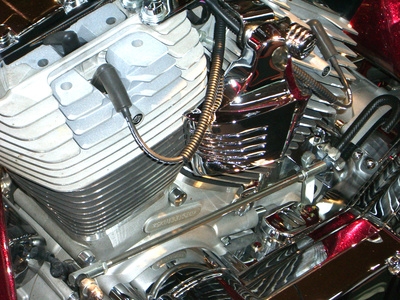
Every internal combustion engine in a car built after 1940 has a starter motor. This is simply an electric motor attached at the junction between the engine and the transmission by a special housing. The housing allows the motor to protrude into the space just enough to engage the flywheel on the back of the engine and turn it until the combustion process begins. Starters are made just like any other heavy-duty electric motor, but with a few additions.
The armature is the heart of an electric motor. It rides on the central shaft, which also contains the commutator in bearings front and rear. The armature runs in the field created by the coils and is essentially a moving magnet when the coils are energized.
The commutator is a section of the shaft at the rear of the starter housing on which the brushes run to conduct electricity.The brushes are two pieces of carbon attached to wires. These wires are connected to the battery through the starter switch. When the switch is thrown, they conduct electricity to the coils and armature causing the starter to spin.
The Bendix drive is a unique combination of a spring and a gear. When the starter is engaged, the gear extends into the housing on the front of the unit, engages the flywheel and spins the engine to begin the combustion process. The Bendix is sometimes activated by a solenoid and a wishbone-shaped lever, depending on manufacturer.